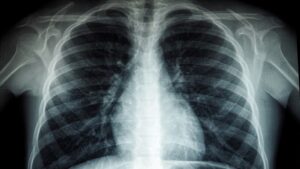[ad_1]
Flat feet (pes planus) are also known as low feet among the people. There are 26 different bones in the human foot and ankle and many joints that hold these bones together. In addition, dozens of muscles, tendons and ligaments support the foot structure.
When viewed from the sole of an adult’s foot, transverse and longitudinal cavities, called arches, are seen. The structure of the foot arches determines how the load distribution on a person’s foot is and its effect on walking.
Belts need to be tough and flexible to adapt to stress and a variety of surfaces. Conditions where the arches of the feet are absent or less are defined as flat feet. In the case of flat feet, this feature of the foot, which distributes the body weight on the ground from three points, is impaired and some problems may occur due to the biomechanical changes that occur.
WHAT ARE THE SYMPTOMS OF FLATFOOT?
Flat feet (pes planus) are usually not a problem in children and adults. Flat feet, which usually do not constitute an obstacle for sports or any activity, can last until a certain age in children.
Symptoms of flat feet:
– Pain
The most common symptom of flatfoot is foot pain and calf pain caused by strained muscles and ligaments. Abnormal stress on the knee and hip can also cause pain in these joints.
Pains;
inside ankle
in the arches of the feet
in the calves
in knee joints
It can be felt in the hip joints and lower back.
– Quick deformation of shoes
– Fatigue of the legs
– Feeling of stiffness or numbness in the feet
– Swelling in the feet
– Calluses secondary to foot pressure disorder
– Problems with walking or balance may also be encountered.
FLATfoot TREATMENT
Treatment for flat feet depends on the severity and cause of the problem. If flat feet do not cause pain or other difficulties, treatment is usually not needed.
Foot arch supports (orthotic devices) may be useful to relieve pain associated with flat feet. Carefully designed supports that support the foot curves can also be preferred. Devices that support the arch of the foot do not cure flat feet, they only reduce symptoms.
Stretching exercises, especially in flat feet that develop due to the short Achilles tendon, exercises that relax this tendon are beneficial.
Physical therapy can also be helpful from time to time for pain associated with flat feet.
Rest and ice therapy are helpful for pain relief. In particular, activities that increase complaints should be avoided. Walking, cycling or swimming can be preferred instead of heavy sports.
Painkillers recommended by the doctor can be used for the pain experienced.
Risk factors that can make flat feet worse, such as diabetes, high blood pressure and obesity, should be controlled.
FLAT FOOTWEAR IN CHILDREN
Flat feet, which is one of the most common orthopedic problems in children; most of the time, when the foot is under load, that is, when pressing the ground, the arc that should be on the inside of the sole of the foot is not seen, when viewed from the back, the heel is turned outward and the sole completely contacts the ground. Flat feet are related to the tissues and bones in the feet and lower legs. This is normal in infants and young children.
All babies appear to have flat feet at birth. Therefore, flat feet should not be feared at a very young age. However, after a certain age, the possibility of flexible flat feet increases, especially if there is a family history.
More common in children flexible flat feet usually a health does not cause a problem. Parents, where foot development is faster not to worry in the first 5 years however, they should definitely consult an orthopedic and traumatology specialist for the diagnosis of hard or flexible flat feet.
Follow NTV on social media
[ad_2]
Source link






